PRAISE FOR WAREHOUSE MANAGEMENT THIRD EDITION
There are few people in the world with Gwynne Richards specialist knowledge and experience. Aligned to the rapid pace of change in todays logistics industry, his latest edition of Warehouse Management is an invaluable tool for understanding best practice in this vitally important business. Seasoned practitioners as well as the young talent needed by the industry will find this a great source of reference and learning. Peter Ward, Chief Executive, United Kingdom Warehousing Association
Warehouse Management, third edition, is an essential one-stop shop for both experienced practitioners and those who want to fully understand the fundamentals of how to manage a business storage facility. This is a technical topic, yet the book is accessible, with industry terms clearly explained and examples of best practice provided. Warehouse Management is a must-read for everyone in the supply chain and logistics industries, business students and those who want to understand more about how to operate a warehouse. Phil Wood, Order to Cash Manager Northern Europe, Mondelz International
This third edition of Warehouse Management is very welcome and provides great insight into all aspects of the subject. I know from my work with Gwynne Richards at The University of Warwick that his students appreciate the book as a source of reference during their studies. It is an invaluable addition to the bookshelves of students and experienced practitioners alike. David James, Director, Subsidiary Management, KNAPP AG
Comprehensive! Warehouse Management is an excellent resource for anyone with warehouse and distribution responsibilities. This book provides readers with a deep understanding of the principles of warehouse management and opportunities to improve efficiencies. Michael Mikitka, Warehousing Education and Research Council (WERC)
A great resource for students and practitioners. Whether at university or as part of continuing professional development, Gwynne Richards third edition provides timely updates that warehousing and operations professionals need to know to stay ahead. Kevin Richardson, Chief Executive, The Chartered Institute of Logistics and Transport (CILT) UK
Third Edition
Warehouse Management
A complete guide to improving efficiency and minimizing costs in the modern warehouse
Gwynne Richards

Publishers note
Every possible effort has been made to ensure that the information contained in this book is accurate at the time of going to press, and the publisher and authors cannot accept responsibility for any errors or omissions, however caused. No responsibility for loss or damage occasioned to any person acting, or refraining from action, as a result of the material in this publication can be accepted by the editor, the publisher or any of the authors.
First published in Great Britain and the United States in 2011 by Kogan Page Limited
Second edition published in 2014
Third edition published in 2018
Apart from any fair dealing for the purposes of research or private study, or criticism or review, as permitted under the Copyright, Designs and Patents Act 1988, this publication may only be reproduced, stored or transmitted, in any form or by any means, with the prior permission in writing of the publishers, or in the case of reprographic reproduction in accordance with the terms and licences issued by the CLA. Enquiries concerning reproduction outside these terms should be sent to the publishers at the undermentioned addresses:
2nd Floor, 45 Gee Street
London EC1V 3RS
United Kingdom
www.koganpage.com
c/o Martin P Hill Consulting
122 W 27th St, 10th Floor
New York NY 10001
USA
4737/23 Ansari Road
Daryaganj
New Delhi 110002
India
Gwynne Richards, 2011, 2014, 2018
The right of Gwynne Richards to be identified as the author of this work and the right of each commissioned author of this work to be identified as the author of their contribution has been asserted by them in accordance with the Copyright, Designs and Patents Act 1988.
ISBN 978 0 7494 7977 0
E-ISBN 978 0 7494 7978 7
Typeset by Integra Software Services, Pondicherry
Print production managed by Jellyfish
Printed and bound by CPI Group (UK) Ltd, Croydon CR0 4YY
CONTENTS
List of Figures
List of Tables
Where you see the following symbol  followed by a video title and a url, you will be able to access a video of the equipment or process discussed by linking to that url. (As video links online sometimes disappear or are moved, some search clues are included should the video not appear.) All the videos are available on Gwynne Richards YouTube channel.
followed by a video title and a url, you will be able to access a video of the equipment or process discussed by linking to that url. (As video links online sometimes disappear or are moved, some search clues are included should the video not appear.) All the videos are available on Gwynne Richards YouTube channel.
PowerPoint slides can be accessed from the following Kogan Page url to aid schools and universities who have adopted the book in their curriculum: www.koganpage.com/WM3
First, I need to acknowledge the help and support of my wife Teresa who has provided hours of encouragement and insight, together with bucketfuls of tea and coffee.
Second, I must acknowledge the help of my co-writers:
- Barbara Scott;
- David Cairns of Q Log Consulting;
- Chris Sturman of FSDF;
- Ruth Waring of Labyrinth Logistics Consulting;
- Simon Edwards of Aaron and Partners, Solicitors, and his colleagues.
My thanks also to Kate Vitasek and Bill Dibenedetto for their contribution on outsourcing and for providing some excellent insights and to Joe Fogg for his photographs.
Thanks also to the Chartered Institute of Logistics and Transport training team who asked me to run their Warehouse Management course from which I have gained further insight into the subject both through the delegates and the need to keep up to date with advances in this area.
My thanks also go to Mike Allibone, Stephen Cross, Ian Davies, David Hyslop, David James, Keith Washington, Gary Frankham, Simon Brown, Scott Williams and all other contributors of facts and photographs, all of whose websites are included at the back of the book.
Finally, thanks to Amy Minshull and Julia Swales of Kogan Page for their patience and resilience through this whole process.
Also congratulations to Kogan Page on their 50th anniversary this year.
If I dont have room for an item I put it in warehouses.
(URSULA ANDRESS (1936))
What is a warehouse?
A warehouse should be viewed as a temporary place to store inventory and as a buffer in supply chains.
It serves as a static unit in the main matching product availability to consumer demand and as such has a primary aim which is to facilitate the movement of goods from suppliers to customers, meeting demand in a timely and cost-effective manner.
(Adapted from Van den Berg (2011))
Primarily a warehouse should be a trans-shipment point where all goods received are despatched as quickly, effectively and efficiently as possible. They are not there to store goods ad infinitum.


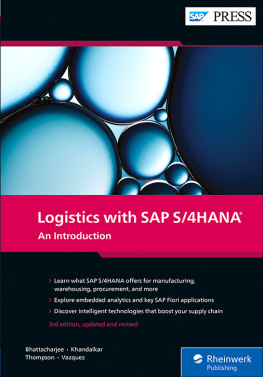
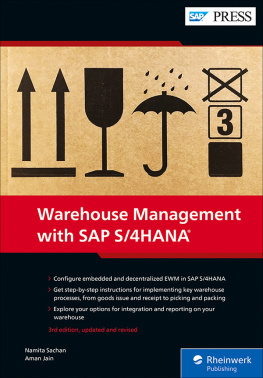

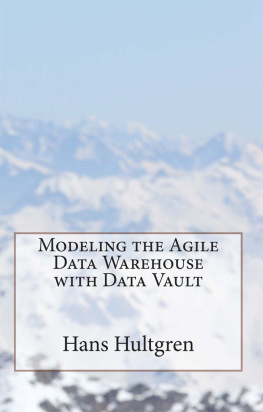
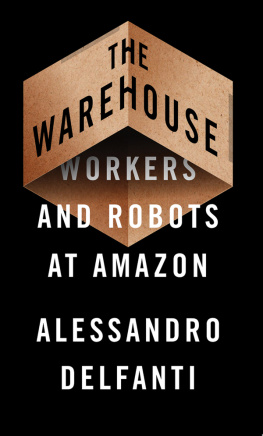
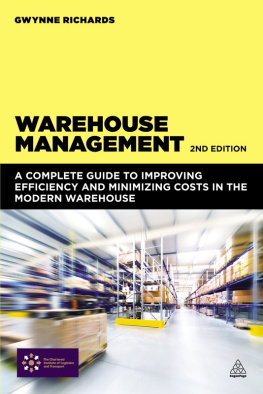
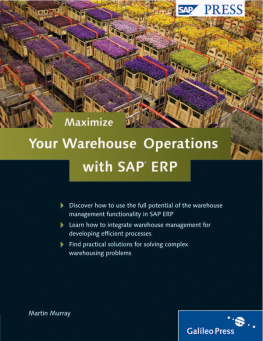

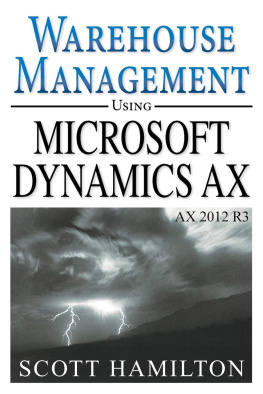



 followed by a video title and a url, you will be able to access a video of the equipment or process discussed by linking to that url. (As video links online sometimes disappear or are moved, some search clues are included should the video not appear.) All the videos are available on Gwynne Richards YouTube channel.
followed by a video title and a url, you will be able to access a video of the equipment or process discussed by linking to that url. (As video links online sometimes disappear or are moved, some search clues are included should the video not appear.) All the videos are available on Gwynne Richards YouTube channel.